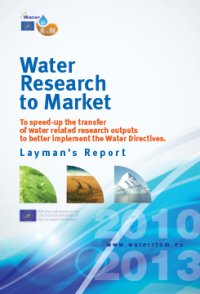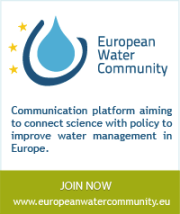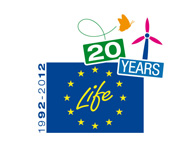ENSAT
| Output characterisation | |
| OUTPUT SENTENCE |
Reactive layer: a reactive organic bed that, once installed in the surface of infiltration ponds, enhance the biodegradation and sorption of recalcitrant compounds during aquifer recharge |
| OUTPUT TYPE | conceptual model |
| WATER TOPIC | Scarcity and Droughts |
| MARKET NEED TAILORED |
What policy objectives or what technological solution does the output solve or fulfil? |
| OUTPUT DESCRIPTION | An organic reactive layer to be placed in recharge ponds to improve water quality |
| STATE OF DEVELOPMENT | full-scale implementation As it is a demonstrative project, Sant Vicenç dels Horts (Barcelona) was selected as the test site. It is a real recharge system |
| INNOVATIVE ASPECTS AND ADVANTAGES | This technology has been developed in the context of permeable reactive layers to remediate groundwater contamination. This project applies this technology to a managed Aquifer Recharge project where recharge is facilitated through infiltration ponds. The main advantage is that the technology has been widely developed for other purposes. Has low cost of implementation and its performance can be easily detected. |
| INTELLECTUAL/INDUSTRIAL PROPERTY RIGHTS |
To CETAQUA. Each partner owns the results obtained in their tasks. |
| TRANSFERABILITY | Yes, after the a previous site study to analyse the site conditions |
| POTENTIAL USERS/CLIENTS | Operators of managed aquifer recharge facilities (e.g. Water Agencies, water utilities). |
| BUSINNESS CASE | No |
| Estimation of risks | |
| INNOVATIVE DISADVANTAGE | The reactive layer has a limited life. The duration of the reactive layer is not yet well understood. The system interpretation requires a good hydrogeology knowledge. |
| EVALUATION OF RISKS FOR OUTPUT USERS |
Low risk on legal aspects but it is related to a technology (MAR) that has legal barriers at least in Spain since it has not been commonly used.. |
| ECONOMICAL RISKS | No high economical risks regarding economical aspects |
| TECHNICAL RISKS | Low technical risks |
| MARKET RISKS | This is a very innovative output, which however has a lack of demand |
| SOCIAL RISKS | No social acceptance of the technology due to lack of awareness and information on it. |
| Steps ahead | |
| NEXT STEPS TO ACHIEVE THE STATUS 'READY TO USE' |
- To be implemented in more places |
| INVOLVEMENT OF THE OWNER FOR THE NEXT STEPS | There is no other research project on-going with the topic of reactive organic layer, despite more experiences and laboratory work is needed DEMEAU project (FP7) will study the removal of micropollutants through MAR systems, but under natural conditions. At the moment, transfer of results and dissemination will continue. |
| TYPE OF PARTNER FOR THE NEXT DEVELOPMENTS | To have a successful implementation, the involvement of the following organisations will be needed: - Public administrations (Water Agencies) - Water utilities As they are the end-users of reactive layer technology. |
| TASKS TO BE PERFORMED | Transfer sessions (specially focussed in the AGBAR group). |
| COLLABORATION DETAILS | It will be useful to have transfer sessions with other potential clients (water utilities, water agencies), but due to the lack of budget it is not expected. |
| Estimation of ressources | |
| RESOURCES FOR NEXT STEPS | There are no next steps planned. |
| FORESEEN COSTS FOR NEXT STEPS | There are no next steps planned. |
| Contact | |
| TECHNICAL CONTACT | Marta Hernández |
| COUNTRY | SPAIN |
| WEBSITE | http://www.life-ensat.eu/ |
| Background | |
| PROJECT NAME | Enhancement of Soil Aquifer Treatment to Improve the Quality of Recharge Water in the Llobregat River Delta Aquifer |
| PROJECT ACRONYM | ENSAT |
| PROJECT DESCRIPTION | This project aims at improving the quality of the recharge water at Sant Vicenç dels Horts Managed Aquifer Recharge site by means of the implementation of an organic substrate layer for enhancing Soil Aquifer Treatment (SAT). The project will: • Demonstrate the application of Soil Aquifer Treatment (SAT) during aquifer recharge episodes with reclaimed water or low quality river water. • Develop a modelling tool (a software) for the prediction at the field scale of the impact of an organic substrate in terms of hydraulics and geochemistry during infiltration practices. • Adapt and transfer results obtained (hydrogeochemical model and methodology for the selection, implementation and validation of the tested technology) to aquifer recharge sites in Europe. |
| LEADER | CETAQUA, Spain |
| TEAMS INVOLVED | ACA (Spain) CSIC-IDAEA (Spain) AMB (Spain) |
| COUNTRIES INVOLVED | Spain |
| PROJECT LOCATION | Sant Vicenç dels Horts, Llobregat River Delta, Catalonia, NE Spain |
| FUNDING ORGANISATION | Life+ |




